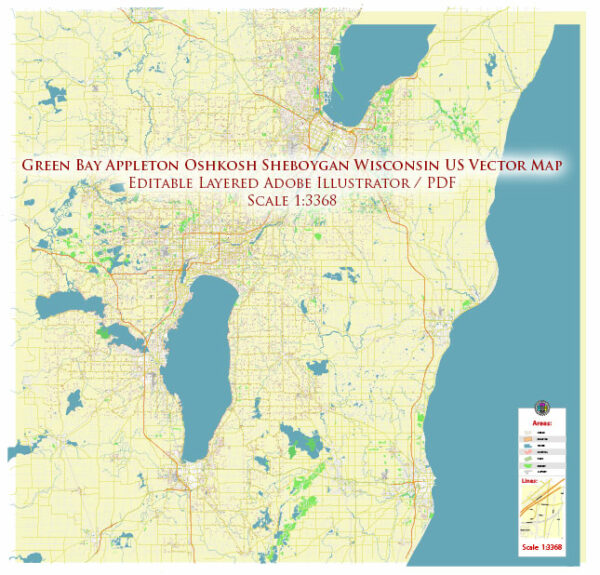Green Bay and Sheboygan are two cities located in Wisconsin, and they are both part of the energy system that serves the state of Wisconsin and the broader United States. Here’s an overview of the energy system in this region:
- Electricity Generation: Electricity in Green Bay and Sheboygan, like most places in the United States, is primarily generated through a combination of sources. Common sources of electricity generation in Wisconsin include:
a. Coal: Historically, coal has been a significant source of electricity in Wisconsin, but its use has been decreasing in recent years due to environmental concerns and the shift towards cleaner energy sources.
b. Natural Gas: Natural gas power plants have become more prominent as a source of electricity, as it is considered a cleaner-burning fossil fuel compared to coal.
c. Renewable Energy: Wisconsin is also increasingly turning to renewable energy sources, such as wind and solar power, to generate electricity. These sources are more environmentally friendly and contribute to reducing greenhouse gas emissions.
- Transmission and Distribution: The electricity generated in and around Green Bay and Sheboygan is transmitted through a network of power lines and substations before being distributed to homes, businesses, and industries in the area. This infrastructure is managed by utility companies like Wisconsin Public Service (WPS), We Energies, and others.
- Natural Gas: In addition to electricity, natural gas is used for heating and industrial processes in Green Bay and Sheboygan. The natural gas distribution system is also managed by local utility companies.
- Energy Efficiency and Conservation: Both cities are likely to have energy efficiency and conservation programs in place to encourage residents and businesses to reduce energy consumption and lower their environmental impact.
- Renewable Energy Initiatives: Many regions in Wisconsin, including Green Bay and Sheboygan, are promoting the development of renewable energy projects. This includes wind farms, solar installations, and other initiatives to increase the share of clean energy in the local energy mix.
- Regulatory Framework: The energy system in Wisconsin is subject to state and federal regulations. The Public Service Commission of Wisconsin (PSC) plays a role in regulating utilities and ensuring that the energy system operates in a manner that is fair, reliable, and safe.
It’s important to note that the energy landscape is continually evolving, with a growing emphasis on sustainability and reducing carbon emissions. This means that there is a transition towards cleaner and more sustainable energy sources in many regions, including Green Bay and Sheboygan. This transition is driven by a combination of environmental concerns, economic factors, and technological advancements.


 Author: Kirill Shrayber, Ph.D.
Author: Kirill Shrayber, Ph.D.